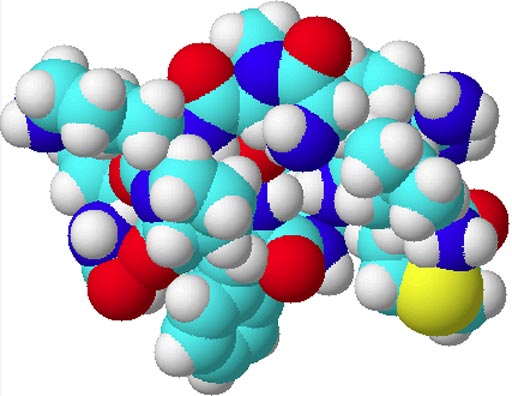Tear Substance Indicates Possible Nerve Damage in Diabetes Patients
By LabMedica International staff writers
Posted on 17 Jul 2017
Measurement of levels of substance P peptide in tears has been proposed as a method for determining possible nerve damage in individuals suffering from diabetes.Posted on 17 Jul 2017
Substance P is a neuropeptide composed of a chain of 11 amino acid residues. It is member of the tachykinin neuropeptide family and acts as a neurotransmitter and neuromodulator. Its receptor - the neurokinin type 1 - is distributed over cytoplasmic and nuclear membranes of many cell types (neurons, glia, endothelia of capillaries and lymphatics, fibroblasts, stem cells, white blood cells) in many tissues and organs.

Image: A space-filling model of substance P (Photo courtesy of Wikimedia Commons).
Investigators at the University of New South Wales (Sydney, Australia) determined total protein content and substance P concentrations in tear samples obtained from 17 healthy control individuals and nine diabetes patients. Corneal nerve fiber density, an indication of diabetes-related damage to the peripheral nerves (peripheral neuropathy), was measured by confocal microscopy.
Results revealed that while there was no significant difference in total protein content between the groups, substance P concentrations were significantly higher in the tears of the control group compared to the diabetes patients. The diabetes patients also displayed significantly lower corneal nerve fiber density, indicating loss of corneal nerve fibers. Substance P levels were moderately correlated with the corneal nerve fiber density measurements.
First author Dr. Maria Markoulli, a lecturer in optometry and vision science at the University of New South Wales, said, "The positive correlation between substance P and corneal nerve density indicates that substance P may be a potential biomarker for corneal nerve health."
The study was published in the July 7, 2017, issue of the journal Optometry and Vision Science.
Related Links:
University of New South Wales













